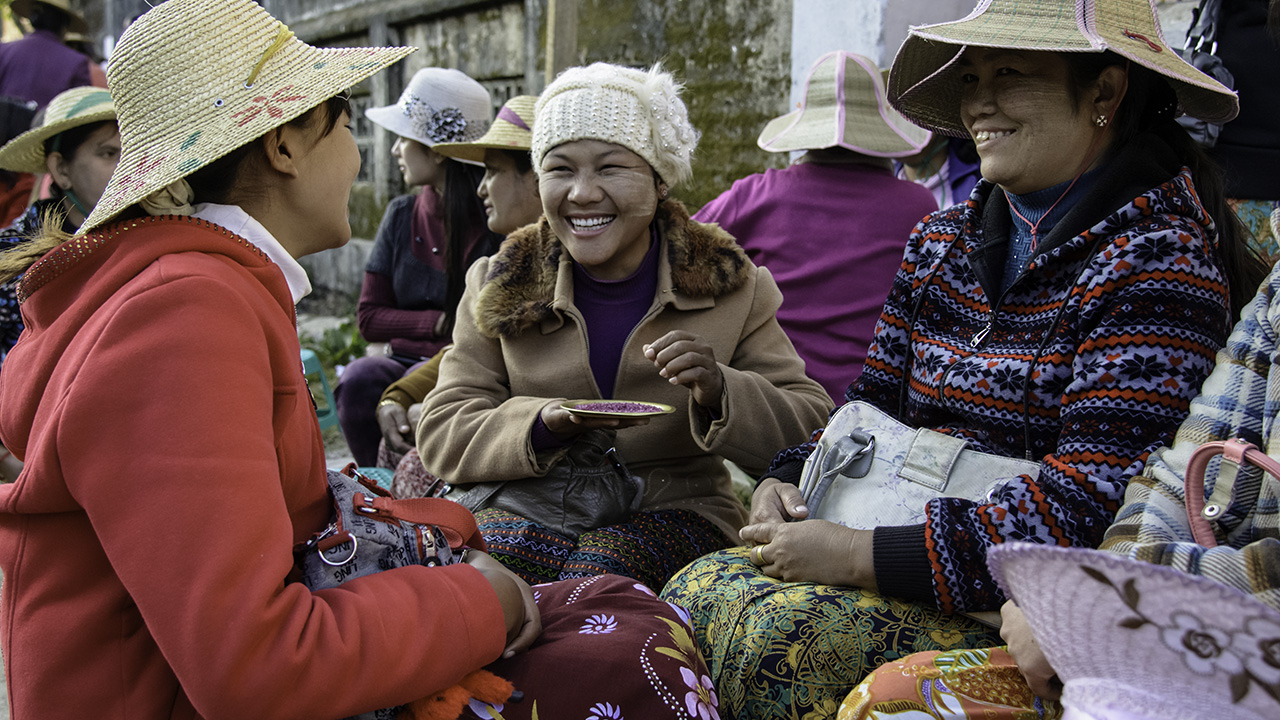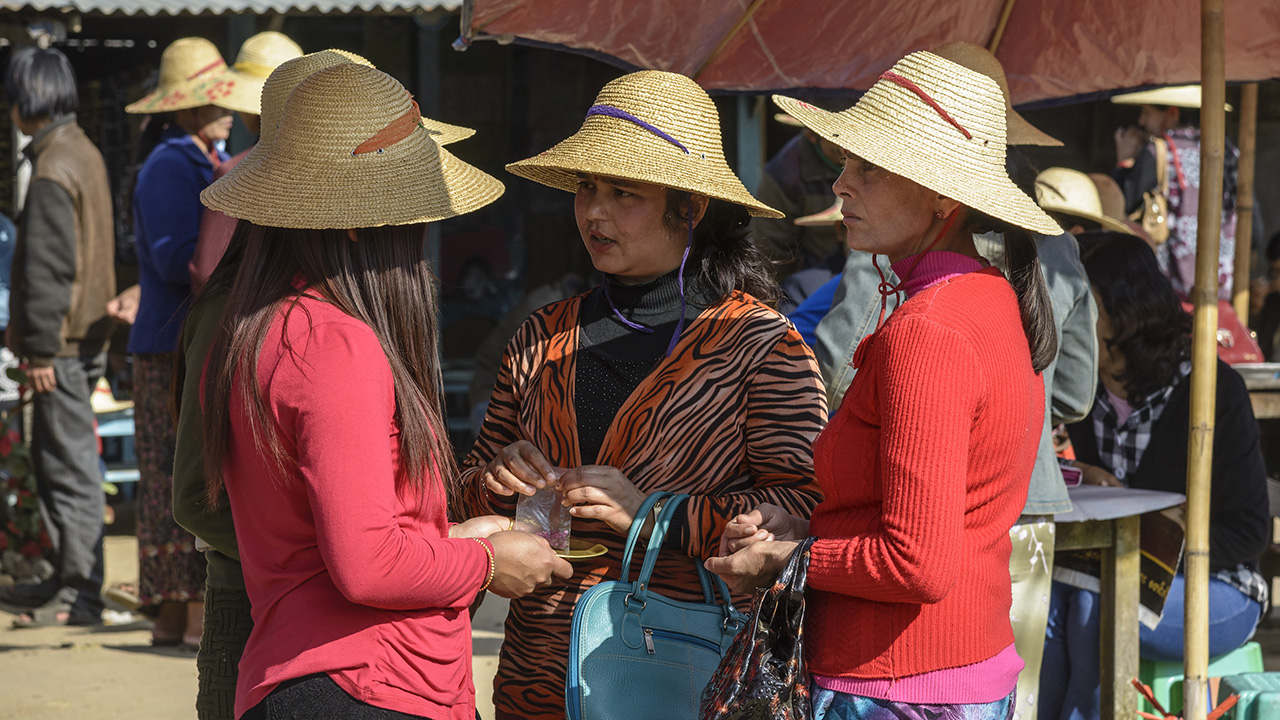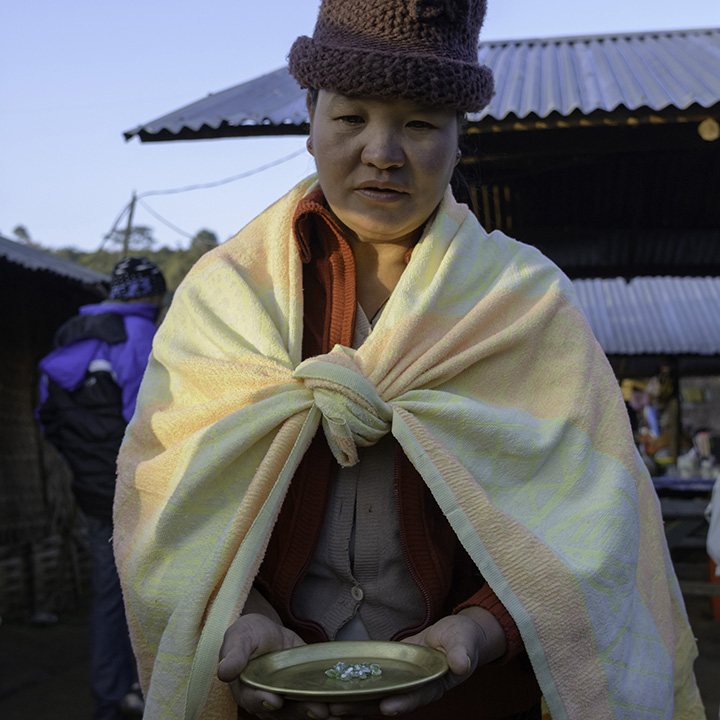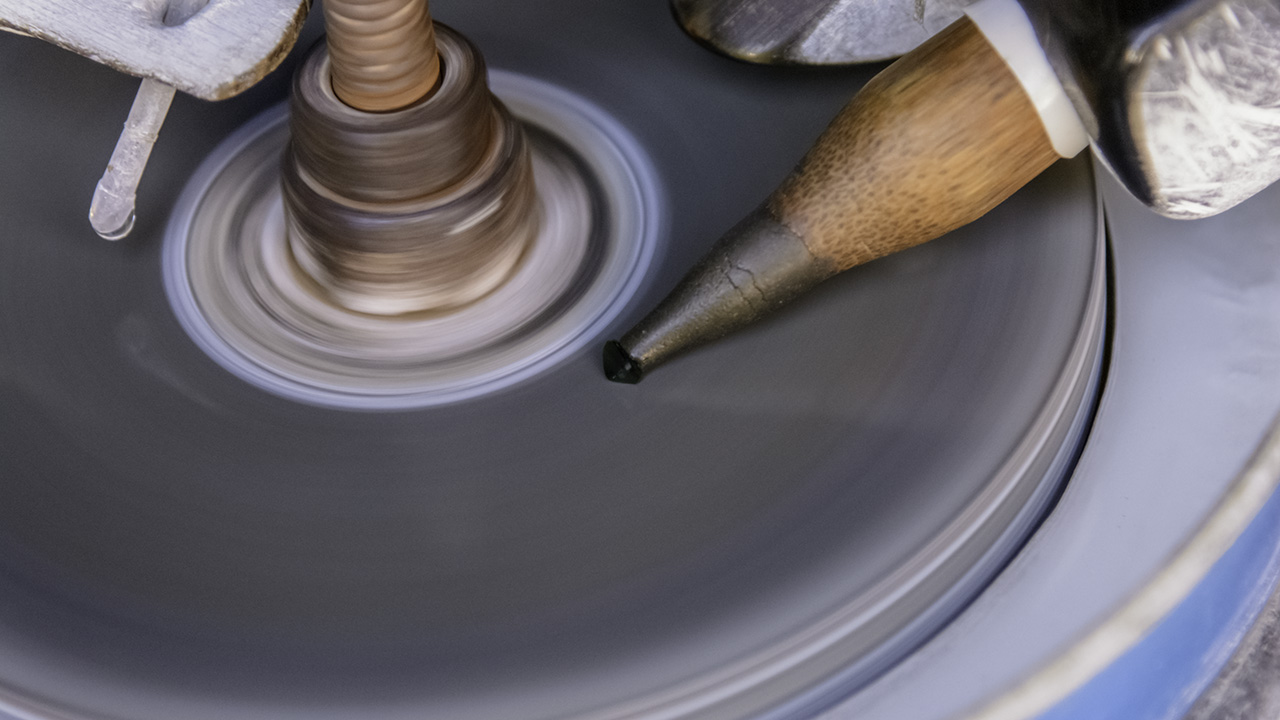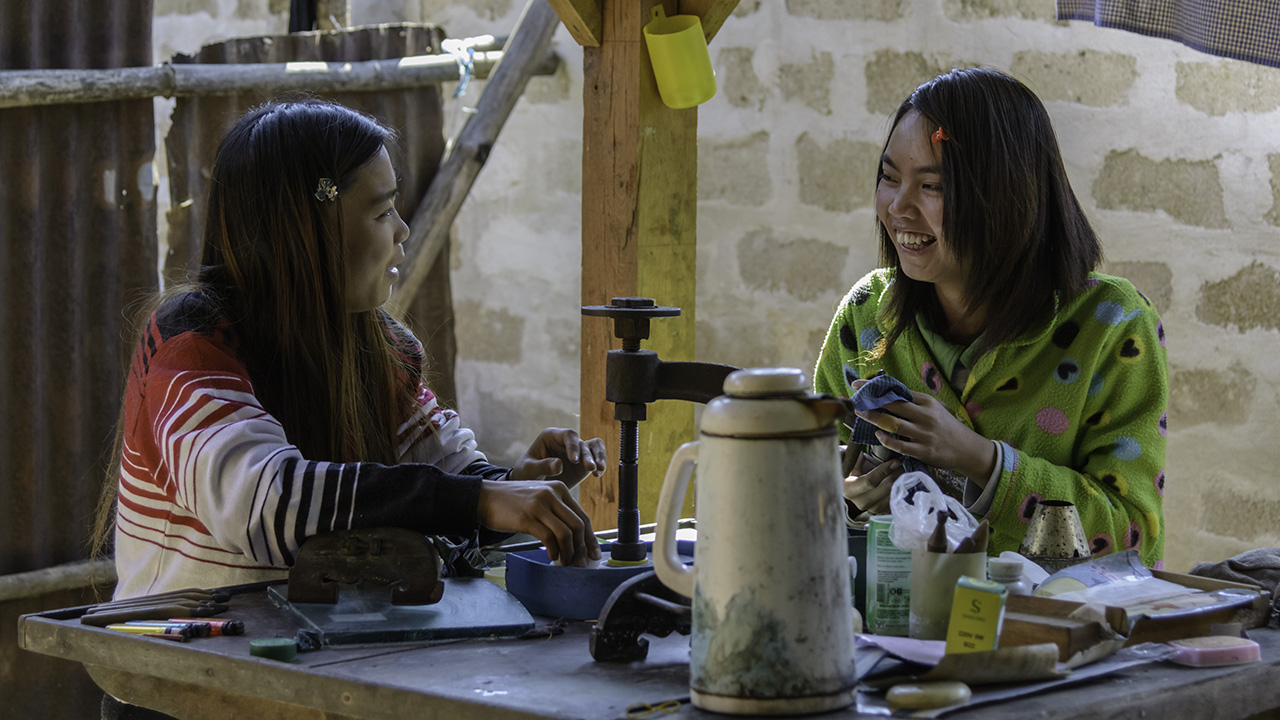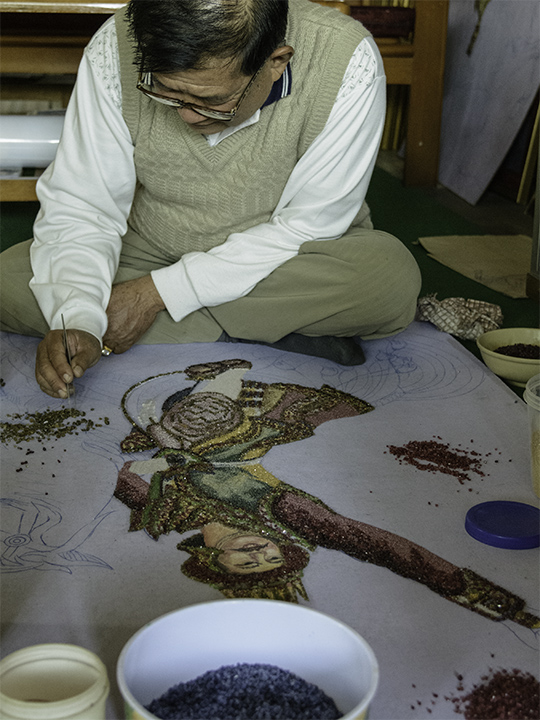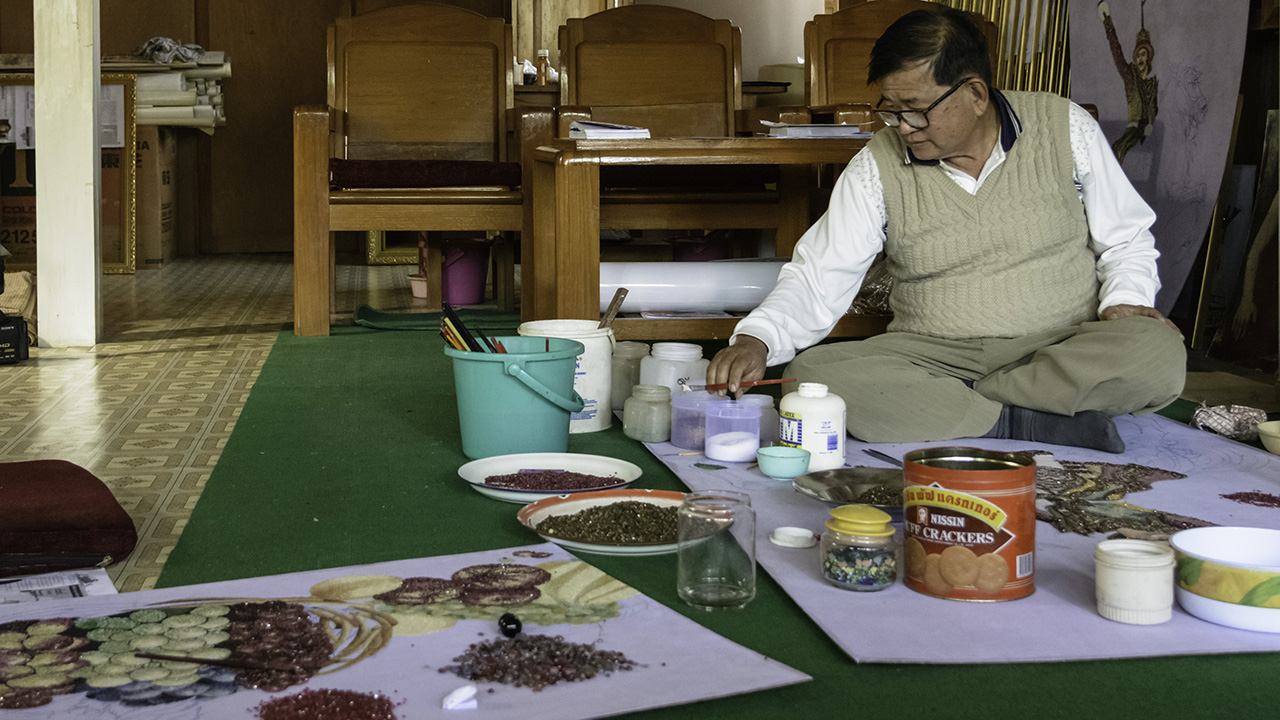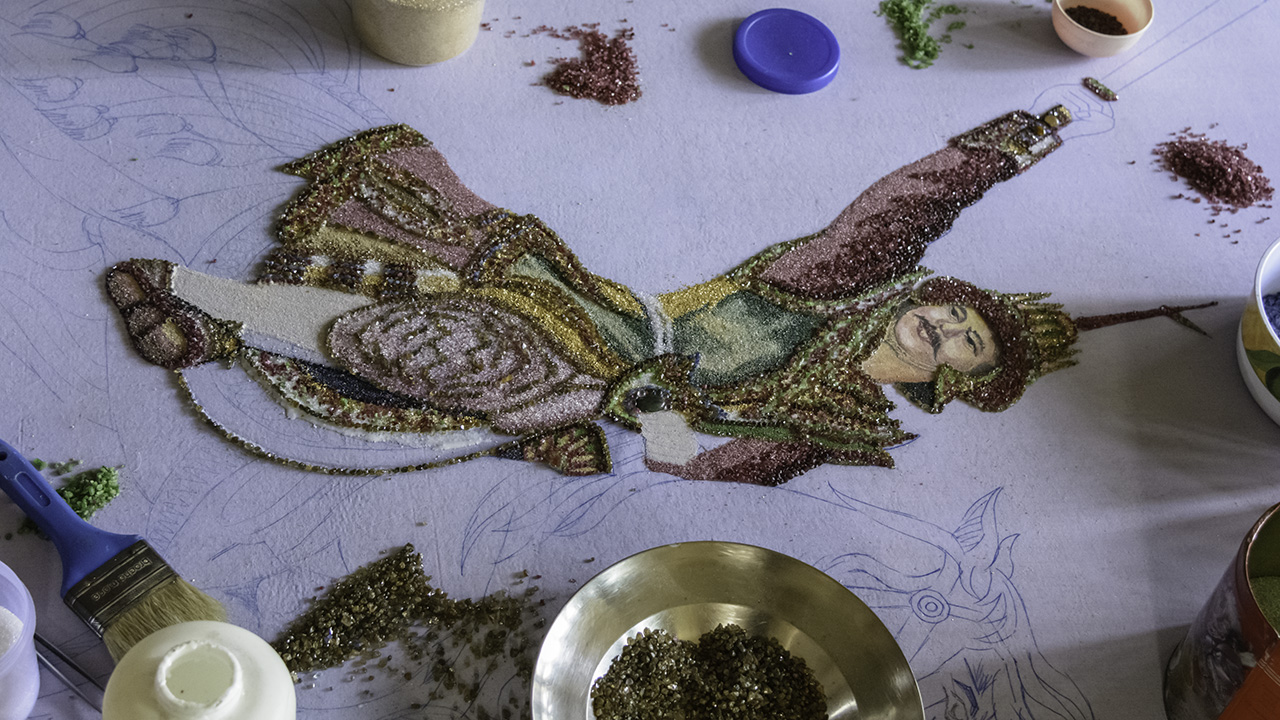Mogok Expedition Series, Part 3: The Market and the Stones
May 20, 2014
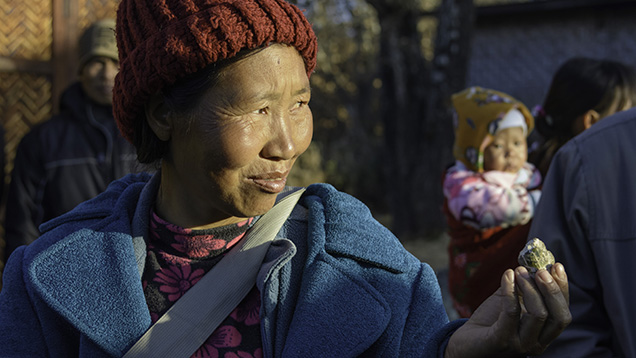
The Market and the Stones
We visited several open-air gem markets in the towns of the Mogok Stone Tract. These included the "Yoke Shin Yone" morning market, usually called the "cinema gem market," and the "Pan Shan" afternoon market, both in Mogok. In Kyatpyin, we went to the "Aung Thit Lwin" morning market and the "Pann Ma" afternoon market. All four of these take place daily. We also visited an interesting market held once a week at the village of Barnardmyo, about an hour's drive north of Mogok.Each market had its own flavor. At the Barnardmyo weekly market, vegetables and livestock were easier to find than gems. Most of the gems traded there were rough stones brought by local farmers or kanase who had spent some time mining around. The Mogok afternoon market at Pan Shan, held from about 1:00 to 3:00 pm, is definitively the larger and more modern one, with its tables and colorful large umbrellas protecting merchants from the sun or the rain. It has two parts, one for rough stones and crystal specimens and another for faceted gems. The morning "cinema" market is very peculiar, as people place all their stones (mainly rough) in front of them on low tables or on the floor. Most of the stones traded there are of low quality, but it is a colorful market that showcases the variety of gems produced in the area. In Kyaptyin, the morning and evening markets are more like a large crowd of people meeting in the street.
While the markets had their own specialties, they shared common threads. When we visited morning and afternoon markets or even the ones in Mogok and Kyatpyin, we often saw the same dealers and kanase women offering us the same stones, though often at much lower prices than before. In Mogok, time runs much slower than in places like New York or Hong Kong, and closing a deal on a stone can take weeks.
The markets were always bustling with activity. The action was primarily among local dealers, traders, and kanase women. Foreigners were always easy for local dealers to spot, and if they were considered serious buyers they were quickly surrounded with offers of gemstones for sale. Foreigners are not legally allowed to purchase gems in Burmese mining areas such as Mogok, but in practice it seems the authorities are tolerant when they only buy a few souvenirs. In any case, the legal export process in Myanmar is complicated, and only faceted stones mounted in jewelry can be exported easily, if purchased from a registered shop.
Both rough and cut gemstones were offered for sale. There were mineral specimens and even finished jewelry at the markets as well. At the Barnardmyo morning gem market, gemstones were a minor attraction while produce and livestock took center stage.
The stones were predominantly lower quality, with most of the better-quality material sold discreetly through dealers to established customers. Often the most stunning features of the gem markets were the kanase women in their hats and colorful attire, selling their wares. To add a modern twist, it was common to see women and men wearing motorcycle helmets while dealing gems. The gem torch was also prevalent among serious traders, along with the occasional head loupe.
The Mogok Stone Tract Gem Markets
The Value Chain
Most of our expedition was spent at gem mines and gem markets, as that was the focus of our trip. However, it is always interesting at any location, and especially at a source, to witness the area’s complete value chain. The first thing we noticed in the markets was that finished stones were offered for sale along with the rough. It is not uncommon for stones to be fashioned at cutting centers far from a gem source and be brought back to that source for sale. However, many of the stones seemed to be cut in the Mogok area.We visited a small but active cottage-industry cutting center. The word "cottage" is meant literally, as the cutting was done in people’s homes, which is very common in Mogok. The cutting machines were amazing as they were not powered by electricity but by foot power. The cutters pedaled back and forth to power the lapidary wheel and polish the stones. It was truly eco-friendly gem cutting.
Mogok’s Cottage Cutting Industry
The cutters were fashioning ruby, intensely colored spinel, sapphire, peridot, and other native Mogok Stone Tract gems. While many of the cut stones in the market had what are called native cuts with less than ideal proportions, some were cut very well and the stones that were fashioned at this tiny home-based factory were well cut and beautiful.Other components of the local gemstone value chain were gem paintings. The authors had both previously seen this industry in the Luc Yen area of Vietnam. In Mogok, we witnessed a master artist, a gem-painting factory, and some stores selling gem paintings. This art form incorporates tiny gems not suited for jewelry use and turns them into artistic creations. Being able to utilize all the material from a mine in some profitable fashion increases the likelihood of continued mining. Hopefully, this art form will grow and spread throughout gem-mining communities.
Mogok’s Gem Painters
My Final Impressions
Mogok is a magical place and a mecca for gemologists. This author is grateful to co-author Vincent Pardieu for inviting him to come along on this expedition to Mogok. I have always wanted to visit the location that was the stuff of legends, visited by some of the most famous gemologists in the world.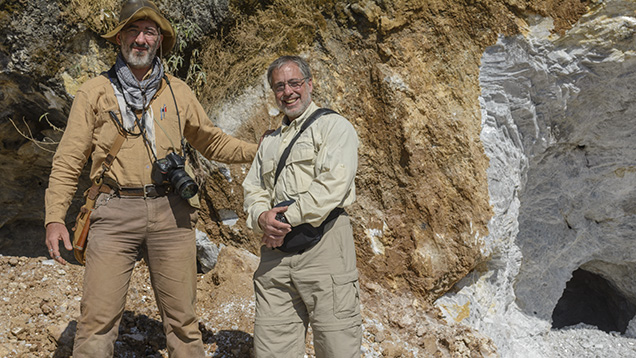
The joint expedition between GIA Laboratory and GIA Education, led by Vincent Pardieu, proved to be highly successful. Photo by Andy Lucas, ©GIA.
Many images of this land remain in my mind. The kanase women at Baw Lone Gyi against the white marble powder and in the open-air gem markets, the friendliness of the people, the amazing food served by the restaurants and street vendors, the night market. Add to all this the main draw for a gemologist to this land: the white areas on the mountains where gem mining occurred, the incredible black weathered marble rock pinnacles, the amazing crevices in the marble that could reach depths of hundreds of meters, the miners who navigated those depths and did the hard work of bringing up the gem-containing marble. All inspired by the intensely colored gemstones sometimes hiding within nature’s white marble gift wrapping.
About the Authors
Vincent Pardieu is senior manager of field gemology at GIA's Bangkok laboratory; Andrew Lucas is manager of field gemology in GIA education.
Acknowledgments
The authors thank the following for all their help: Jordan, a very good friend who was our driver, guide, and translator; Jean Yves Branchard from Ananda Travels in Yangon, Myanmar, who helped us with permits and logistics; and, of course, the people of Mogok, who welcomed us and shared with us their knowledge and friendship.


